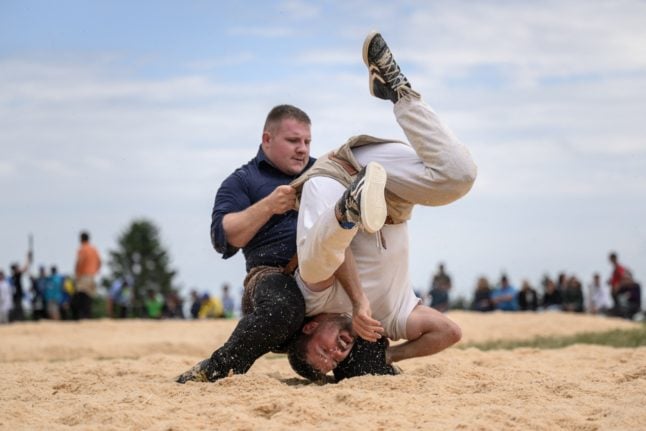SPORT
Swiss ice hockey sensation finally puts spotlight on Switzerland
Switzerland's passion for ice hockey appears to have been born around 1898, when a Canadian who had brought used equipment to Europe organised the first games in Davos and St. Moritz.
Published: 16 June 2017 08:21 CEST

Nico Hischier. Photo: Mathieu Belanger/Getty Images North America/AFP
About 120 years later, the country may have finally produced its first international star.
On June 23rd in Chicago the National Hockey League will hold its annual entry draft, where the world's top amateurs are selected by the NHL's 30 teams.
The first or second player chosen will be Switzerland's Nico Hischier, according to consensus projections from hockey experts, who have unanimously described the 18-year-old from Valais canton as his country's finest-ever prospect.
With Hischier virtually certain to become the top Swiss selection in NHL draft history, the wealthy alpine nation is now seen as a rising hockey power.
The question is: what took it so long?
A failing record?
Switzerland has been hooked on hockey from the start.
When the sport's initial envoy to Europe, Canadian George Alfred Meagher, crossed the Atlantic in the 1890s, his stops other than Switzerland included Paris, London, Glasgow and Brussels, according to “On the Origins of Hockey”, an authoritative book about the sport's early years compiled by three hockey historians.
But unlike Britain, France and Belgium, hockey in Switzerland fast became a national obsession.
Roughly 15,000 matches are played here each year, while the top professional league, known as National League A, has one of the highest attendance rates in Europe, according to sports ministry figures.
“Ice hockey is very big in Swiss culture… about the same as football,” said Franco Baffa of the Society for International Hockey Research, who called it the country's true “national sport”, noting the passion for even tiny local clubs.
But, when it comes to international achievement, Switzerland may best described as a hockey failure.
Sweden and Finland — equally hockey-mad nations with similar populations to Switzerland — have collectively won multiple Olympic medals, world championships and produced dozens of first-rate global talents who have led championship NHL teams.
Swiss hockey can claim no such honours.
'Sleep in your own bed'
The reasons for Switzerland's meagre international record are varied, players and experts said, although one factor stood out.
Elite talents from other European countries have flocked to the NHL, craving the hefty salaries, training and top-level exposure that North America offers, while Swiss players often preferred to stay home.
“My dream was always playing in Switzerland,” said one of the country's few successful exports, Nino Niederreiter, a forward with the Minnesota Wild.
Niederreiter, widely considered to be Switzerland's greatest player, told AFP that while growing up he never thought of playing for iconic franchises like the New York Rangers or Montreal Canadiens.
His horizon stopped at ECH Chur, his local club that plays in a quiet alpine city of 33,000 people.
Swiss players figured they could “make great money and sleep in their own bed”, Niederreiter said.
He began his professional career in the Swiss league, but his skills ultimately propelled him to the NHL.
He was the fifth player chosen in the 2010 entry draft, the highest selection ever for a Swiss player.
Asked how he felt about being displaced from that honour by Hischier next week, Niederreiter said he was resigned.
“At the end of the day, number five is not number one or two.”
Great strides
Baffa agreed that “the NHL is not necessarily the goal of a young (Swiss) player”, with many preferring the comfortable life offered by the domestic league.
But things are changing partly due to players like Niederreiter and Roman Josi, a defenceman with the 2017 Stanley Cup finalist Nashville Predators, the historian said.
Hischier made the rare decision to leave home as a teenager to play for the Halifax Mooseheads of the Canadian Hockey League, the world's top amateur development league, boosting his draft prospects.
Baffa and Niederreiter also noted that improved coaching and a pivot away from the cautious defensive hockey towards a more aggressive offensive style of play has also raised the Switzerland's international profile and helped it generate more dynamic prospects.
And the NHL has noticed.
“Over the last ten years, the country that has made the greatest strides, no question in my mind, is Switzerland,” Brian Burke, a leading hockey executive and former NHL vice president told Canada's The Fan radio station last month.
By Ben Simon
Url copied to clipboard!


 Please whitelist us to continue reading.
Please whitelist us to continue reading.
Member comments